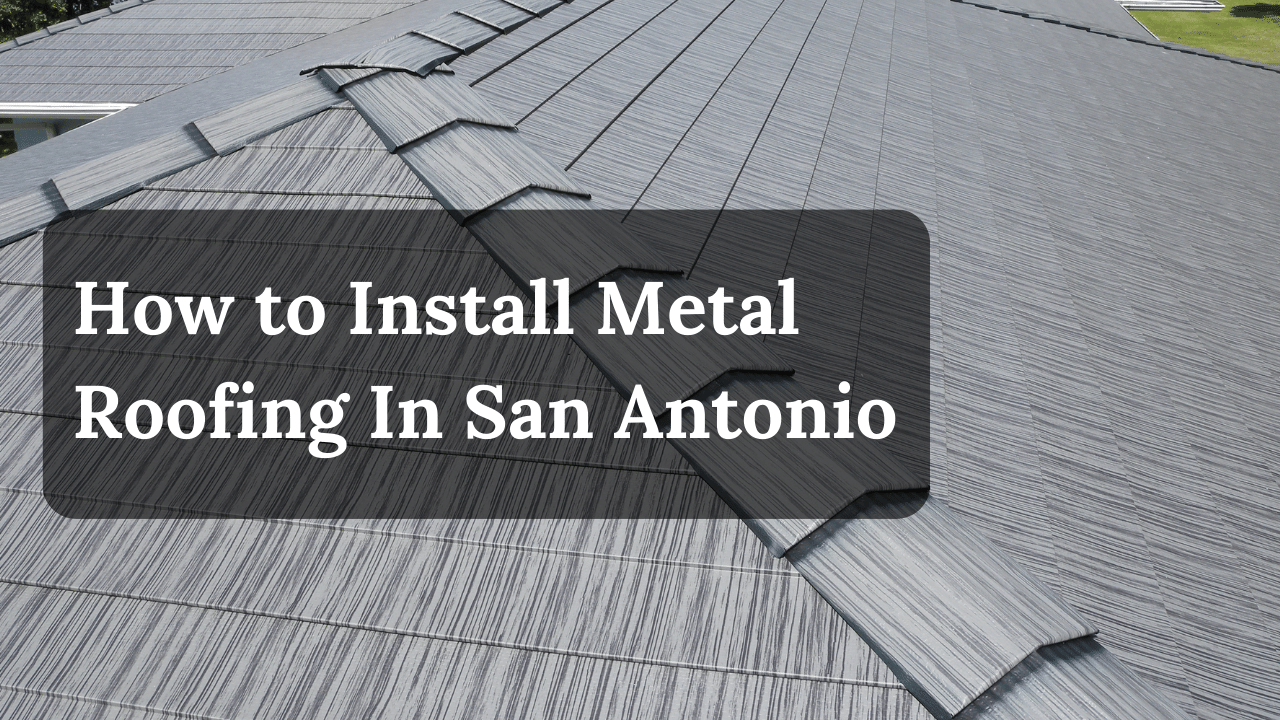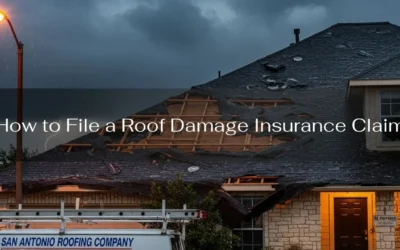Installing a metal roof is an excellent investment for your home. It provides durability, longevity, and aesthetic appeal. However, many homeowners need help with how to install metal roofing correctly. This comprehensive guide will walk you through the step-by-step process of installing a metal roof, ensuring you have all the information you need to tackle this project confidently. Whether you’re a seasoned DIY enthusiast or a beginner, this article will equip you with the knowledge and skills to install metal roofing like a pro.
Table of Contents
- Choosing the Right Metal Roofing Materials
- Preparing Your Roof for Installation
- Measuring and Estimating Materials
- Installing Underlayment
- Attaching the Metal Roof Panels
- Sealing and Finishing Touches
- Maintenance and Care
- Frequently Asked Questions
- Conclusion
Choosing the Right Metal Roofing Materials In San Antonio
Regarding metal roofing, several options are available, including steel, aluminum, copper, and zinc. Each material offers unique advantages, so choosing the right one for your specific needs is essential.
For instance, steel is the most commonly used metal roofing material due to its affordability and durability. On the other hand, aluminum is lightweight and highly corrosion-resistant, making it ideal for coastal areas. Copper is a premium option known for its beauty and longevity. Lastly, zinc offers excellent resistance to rust and requires minimal maintenance.
Consider factors such as climate, budget, and aesthetic preferences before selecting the material for your metal roof. It’s also worth noting that some materials may require additional coatings or treatments to enhance their performance.
Preparing Your Roof for Installation
Before you begin the installation process, preparing your roof adequately is crucial. Here are the essential steps to follow:
- Inspect the Roof: Thoroughly examine your roof for any signs of damage or decay. Replace any worn-out or rotted sections and repair any leaks.
- Clean the Surface: Remove debris, dirt, or moss from the roof surface. A pressure washer can be useful for this task, but be cautious not to damage the roof or its components.
- Install Roofing Felt: Lay down a layer of roofing felt as an additional protective barrier. This underlayment helps to prevent water infiltration and increases the roof’s lifespan.
Measuring and Estimating Materials
Accurate measurement and estimating of materials are crucial for a successful metal roofing installation. Here’s how you can do it:
- Measure the Roof: Start by measuring the length and width of each roof section. Multiply these dimensions to determine the square footage. Add the square footage of all sections to get the total area.
- Consider Roof Pitch: The pitch or slope of your roof affects the material requirements. Steeper roofs may require additional flashing and accessories.
- Consult Manufacturer Guidelines: Different metal roofing manufacturers provide specific instructions and recommendations regarding material estimates. Follow these guidelines for precise calculations.
Remember to account for overlaps and waste when estimating the number of metal panels and accessories needed for your installation.
Installing Underlayment
Before installing the metal panels, it’s essential to lay down an underlayment to provide an extra layer of protection against moisture. Here’s how you can do it:
- Start at the Eaves: Begin at the roof’s lowest point and roll out the underlayment horizontally. Secure it with nails or staples, leaving a small overlap between each row.
- Overlap Rows: As you progress up the roof, overlap each row of underlayment by a few inches. This overlapping ensures water runs off smoothly without seeping into the roof structure.
- Seal the Edges: Seal the edges of the underlayment with roofing cement or a compatible adhesive. This step further enhances the waterproofing capability of the underlayment.
Attaching the Metal Roof Panels
Now that the foundation is ready installing the metal roof panels is time. Follow these steps for a successful installation:
- Start with the Gable Edge: Begin at one gable edge of the roof and work your way across. Align the first metal panel with the roof’s edge, ensuring a slight overhang for proper water drainage.
- Secure the Panels: Attach the metal panels to the roof using screws or nails, following the manufacturer’s recommendations. Position fasteners in the designated areas, usually pre-drilled or pre-punched.
- Interlock the Panels: Slide the next panel into the previous one, interlocking them securely. Repeat this process until you reach the other end of the roof, maintaining a consistent overlap.
Remember to take safety precautions while working on the roof, such as wearing appropriate footwear and using fall protection equipment.
Sealing and Finishing Touches
Pay attention to sealing and finishing details to ensure a watertight and long-lasting metal roof. Here’s what you should do:
- Seal Panel Joints: Apply a bead of sealant or caulk along the panel joints to prevent water infiltration. Use a high-quality, weather-resistant sealant recommended by the manufacturer.
- Install Flashing: Secure flashing around roof openings, such as chimneys, vents, and skylights. Flashing provides an additional barrier against water penetration and directs water away from vulnerable areas.
- Add Trim and Ridge Caps: Install trim pieces and ridge caps to cover the edges and create a finished look. These components enhance the aesthetics and help seal the roof against the elements.
Once you have completed these steps, take a moment to inspect the entire roof for any loose fasteners, gaps, or areas that may require additional sealing. Making these finishing touches ensures a professional-looking and high-performing metal roof.
Maintenance and Care
Metal roofs are known for their durability and low maintenance requirements. However, a little care can go a long way in prolonging the life of your roof. Here are some maintenance tips:
- Regular Inspections: Perform routine inspections to identify any signs of damage or wear. Look for loose panels, damaged flashing, or debris accumulation.
- Keep it Clean: Remove any leaves, branches, or debris that accumulate on the roof regularly. This prevents moisture retention and potential damage.
- Address Issues Promptly: If you notice any issues, such as loose panels or leaks, address them promptly. Timely repairs prevent further damage and ensure the roof’s integrity.
By following these maintenance practices, you can enjoy the benefits of a metal roof for many years.
Frequently Asked Questions
Q: How long does a metal roof last?
A: Metal roofs are known for their longevity. Proper installation and maintenance means a metal roof can last 40 to 70 years or even longer.
Q: Can I install a metal roof over an existing shingle roof?
A: In most cases, installing a metal roof over an existing shingle roof is possible. However, it’s essential to consult with a roofing professional to assess the existing roof’s condition and determine if it can support the additional weight of the metal roof.
Q: Are metal roofs noisy during rain or hailstorms?
A: Contrary to popular belief, metal roofs are not significantly noisier during rain or hailstorms. When properly installed with underlayment and insulation, the sound is comparable to any other roofing material.
Q: Is a metal roof more expensive than other roofing materials?
A: While the upfront cost of a metal roof may be higher than traditional roofing materials, its longevity and durability make it a cost-effective choice in the long run. Metal roofs require less maintenance and are less prone to damage, reducing repair and replacement costs.
Q: Can I walk on a metal roof?
A: Yes, it’s generally safe to walk on a metal roof. However, it’s crucial to take precautions to prevent damage. Use a sturdy ladder, wear soft-soled shoes, and distribute your weight evenly to avoid denting or scratching the metal panels. If you need more clarification or uncomfortable, hiring a professional to perform any necessary inspections or repairs is best.
Q: Are metal roofs more susceptible to lightning strikes?
A: Metal roofs do not increase the likelihood of a lightning strike. Metal is a non-combustible material that can dissipate electrical charge safely. It’s no more susceptible to lightning strikes than any other roofing material.
Q: Can I install a metal roof or hire a professional?
A: While it’s possible to install a metal roof yourself, it’s a complex task that requires knowledge and experience. Installation mistakes can lead to leaks, poor performance, and safety hazards. Hiring a professional roofing contractor ensures proper installation, warranty coverage, and peace of mind.
Conclusion
Installing a metal roof is an investment that offers long-lasting protection and aesthetic appeal for your home. You can confidently tackle the installation process by following the step-by-step instructions outlined in this guide. Remember to choose the right materials, prepare your roof adequately, and follow manufacturer guidelines for a successful installation.
With proper maintenance and care, your metal roof will provide you with years of durability, energy efficiency, and peace of mind. Enjoy the benefits of a beautiful and reliable metal roof for your home.










